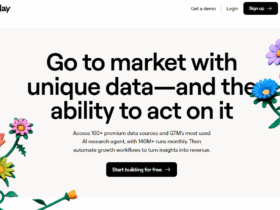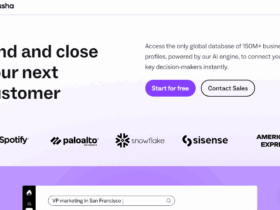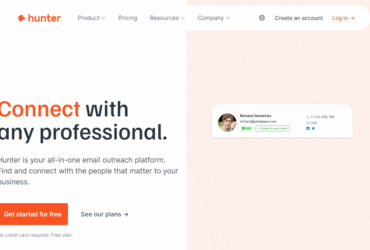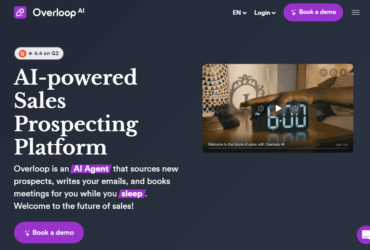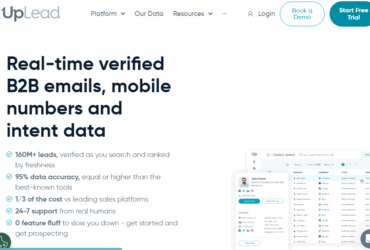Alright fam, let’s talk straight. If you’ve ever used The Cirqle, you probably know it had some pretty solid stuff—like brand collabs, decent campaign management, and a sleek interface. But let’s be real: it wasn’t flawless, and there’s a whole buffet of platforms out there that might just be better in 2025.
I went on a little influencer tech binge and tested out a bunch of these bad boys to see what’s really out there. So, if you’re looking for The Cirqle replacements, you’re in the right place. I broke it down real casual, no boring tech-speak. Let’s get into it—no cap.
1. Mavrck

Okay, so Mavrck is like the Beyoncé of influencer platforms—been in the game a minute, and still slaying.
What I Loved:
-
All-in-one madness – We’re talking creator discovery, payments, UGC campaigns, loyalty programs—you name it, it’s here.
-
White-label vibes – You can make campaigns look super branded, which is clutch for agencies.
What I Didn’t:
-
Pricing is – Definitely more “enterprise” than “small biz.” Not for the faint-of-wallet.
-
Takes time to set up – Not plug-and-play. I had to schedule onboarding just to not break stuff.
Verdict:
If you’re a big brand or managing multiple clients, this thing is a powerhouse. Small biz owners? Might be too much muscle.
2. The Influencer Room
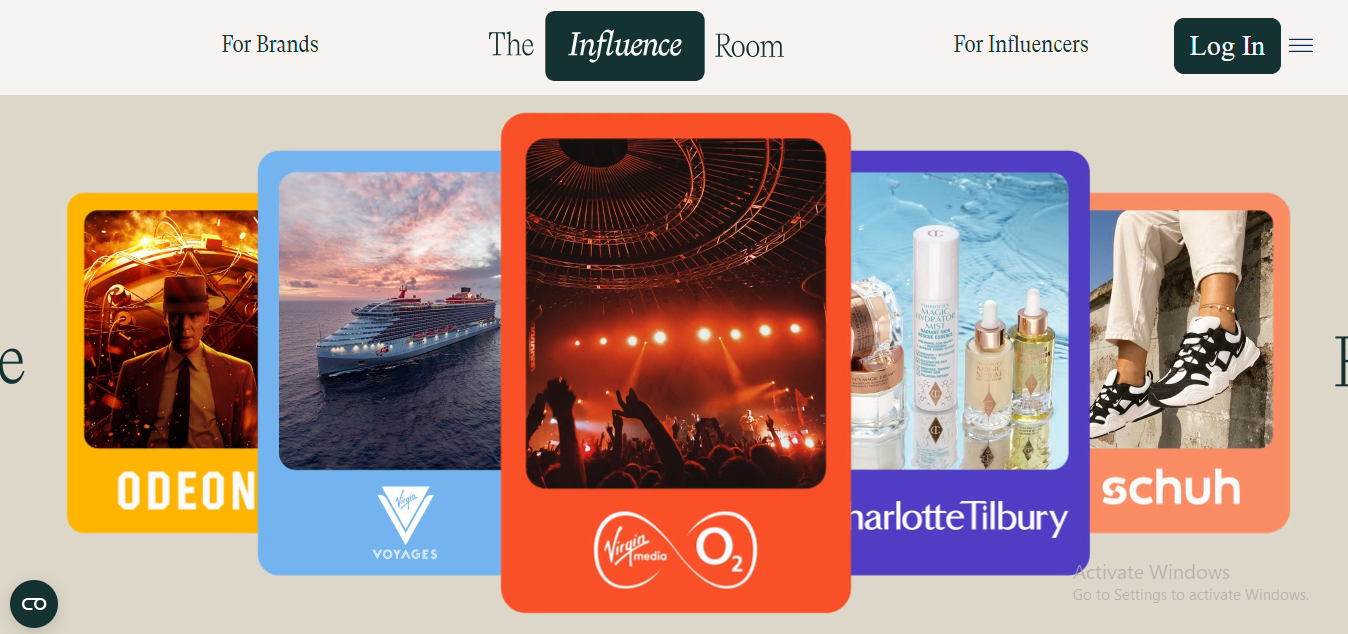
The Influencer Room gives off posh Soho House energy—super chic, super exclusive, and honestly kinda cool.
What I Loved:
-
Community-first approach – Brands actually chat with influencers before campaigns, which builds better vibes and trust.
-
Perfect for gifting campaigns – Especially if you’re in fashion, beauty, or wellness. No cringe cold outreach here.
What Was Meh:
-
Limited creator scale – It’s curated, which is dope for quality, but if you’re trying to run mass influencer drops, this ain’t it.
-
UI can feel clunky – Not terrible, but some menus had me like, “wait, where am I again?”
Verdict:
Great if you care about real connections over metrics. But maybe not ideal if you’re trying to go viral overnight.
3. Grin
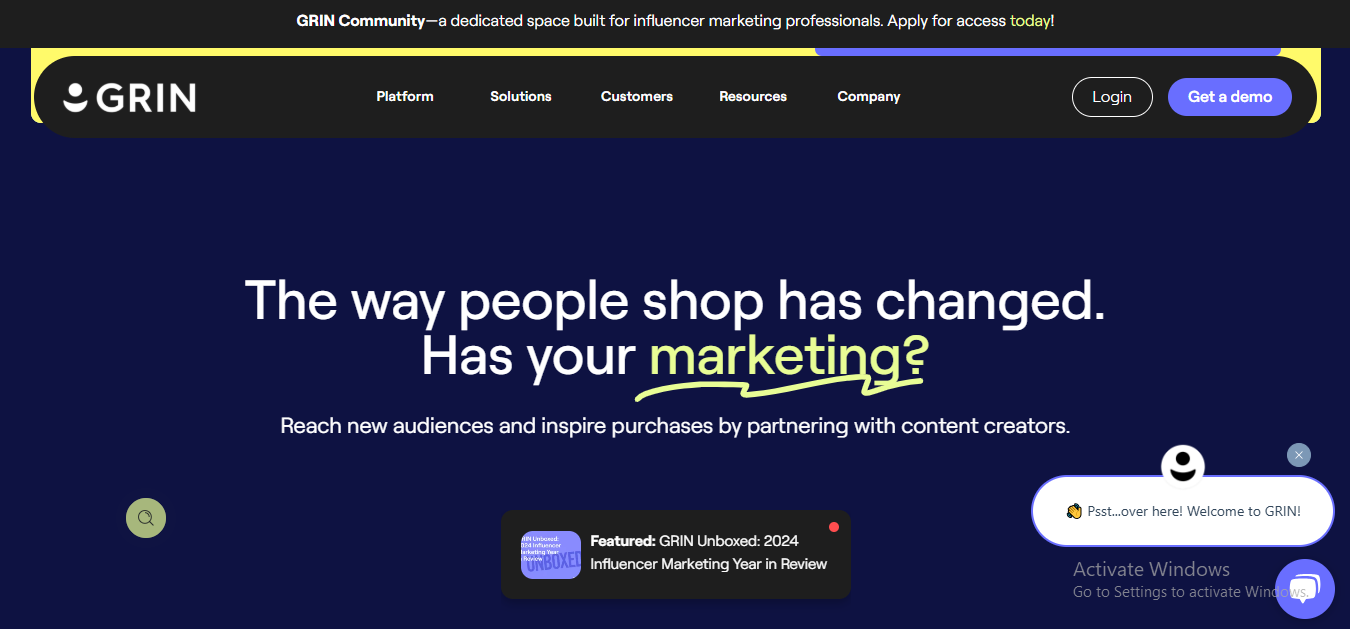
Grin is like that fitness junkie friend who’s super organized and never skips leg day. It’s built for eComm brands, and it does not mess around.
What I Loved:
-
Direct Shopify integration – I legit ran campaigns, sent free products, and tracked sales without touching 10 different tabs.
-
Automated creator comms – Set it, forget it, get your UGC.
What Made Me Go “eh”:
-
Dashboard can feel… corporate – It’s efficient, but definitely not cute.
-
Can be $$$ – Worth it for scaling brands, but if you’re just testing influencer marketing? Maybe hold off.
Verdict:
A beast for eCommerce brands looking to scale influencer campaigns without losing their mind. If you’re bootstrapped? Keep scrolling.
4. Influencity
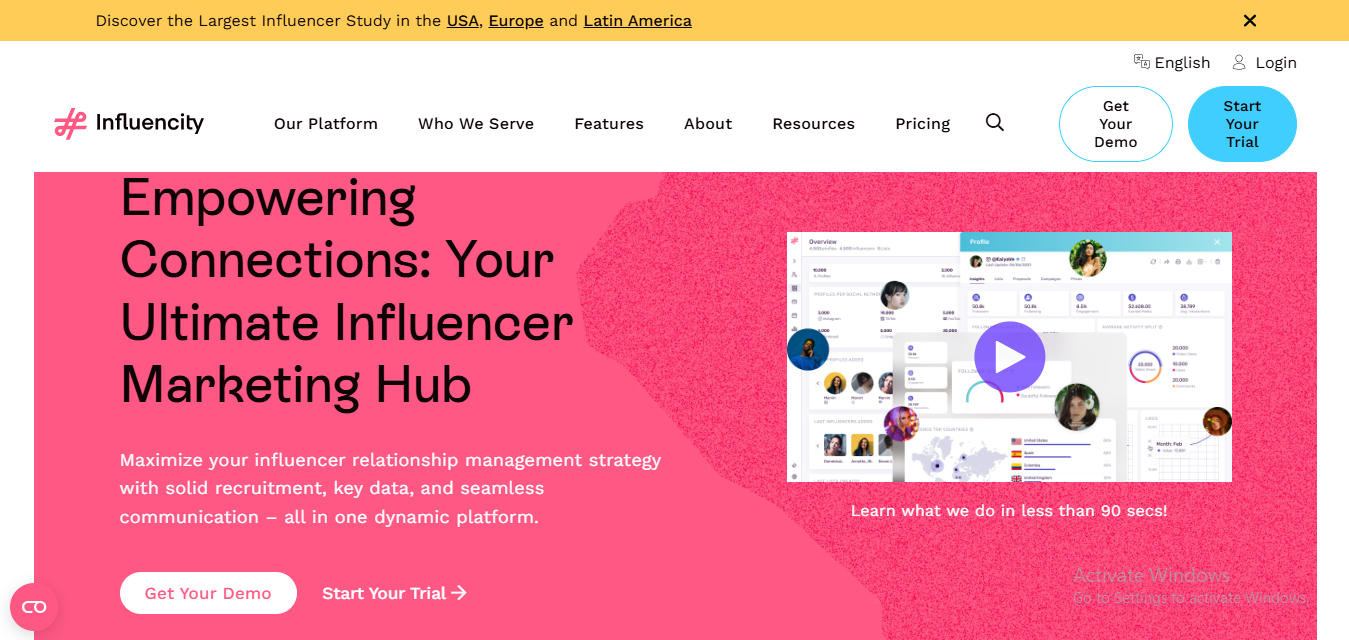
Influencity is kinda like the nerdy tech kid from school who lowkey became a millionaire—you don’t notice it at first, but it’s got range.
What I Loved:
-
Insane filtering – I could find vegan TikTok moms with a 5%+ engagement rate in Canada in, like, 3 clicks.
-
Affordable tiers – Actually impressed at what you get for the price. Small brands, this one’s for you.
What Didn’t Click:
-
UI feels generic – It works, but there’s not much wow factor.
-
Reporting could be better – You get the basics, but don’t expect deep dives like Mavrck.
Verdict:
Perfect if you want laser-accurate influencer search and are working with a lean budget. Not the flashiest, but gets the job done.
5. Hashtag Paid
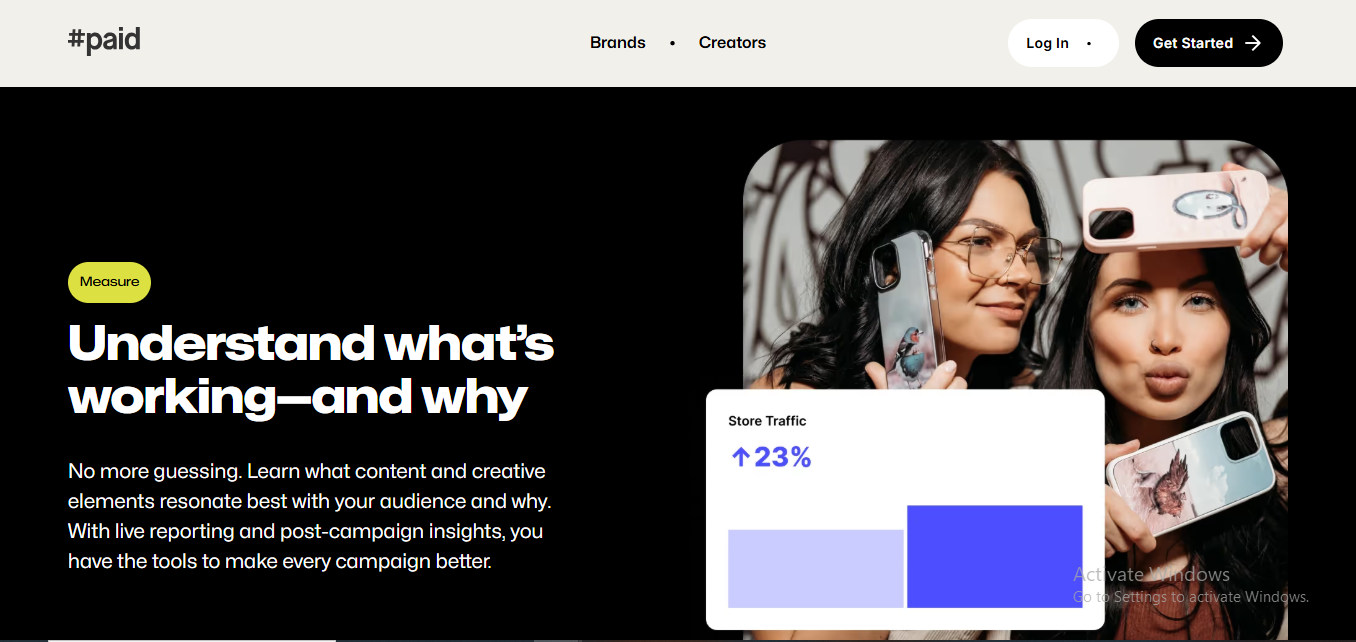
I’m not gonna lie—Hashtag Paid is kinda a vibe. Think cool startup energy, with an algorithm that actually gets what you’re trying to do.
What I Loved:
-
Handpicked creators – They do the heavy lifting for you. It’s like Tinder, but for influencers. You set a brief, they match you up.
-
Great content quality – Because of that curation, the content I got back? Fire.
What I Didn’t:
-
Limited control – You can’t just scroll and invite whoever you want. You gotta trust the match system.
-
Mid-level analytics – You get enough data, but it’s not crazy detailed.
Verdict:
If you hate influencer hunting and want to shortcut the process, this is a sweet setup. But if you’re a control freak like me, it might drive you a little nuts.
6. Lolly
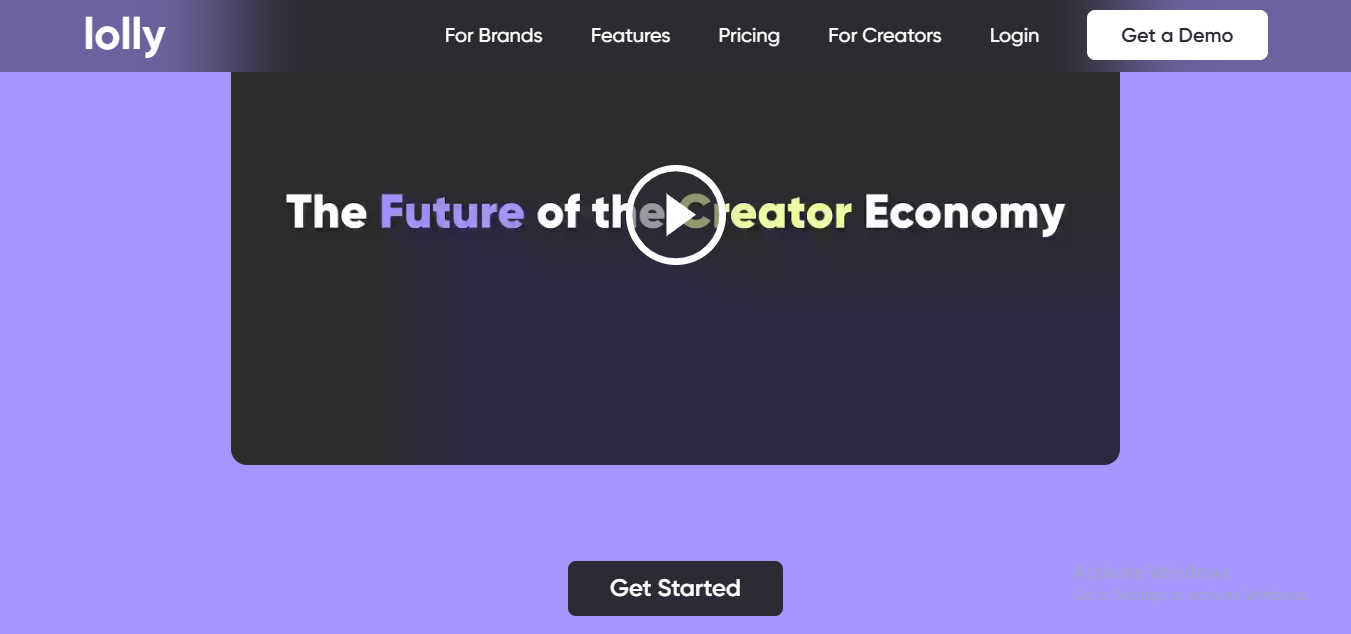
Yup, the OG—Lolly. Still on the list for context since we’re comparing, right?
What I Loved:
-
Content-focused campaigns – You could get creators to focus on storytelling instead of just throwing up #ad on a post.
-
Good UI – It’s clean, visual, and honestly pretty easy to learn.
Where It Fell Short:
-
Lacked scalability – Once you started growing, you kinda outgrew it.
-
Not enough tools under the hood – No fancy analytics or integrations.
Verdict:
Great for early-stage campaigns or one-offs, but not built to scale with big teams or long-term influencer strategy.
7. Popular Pays
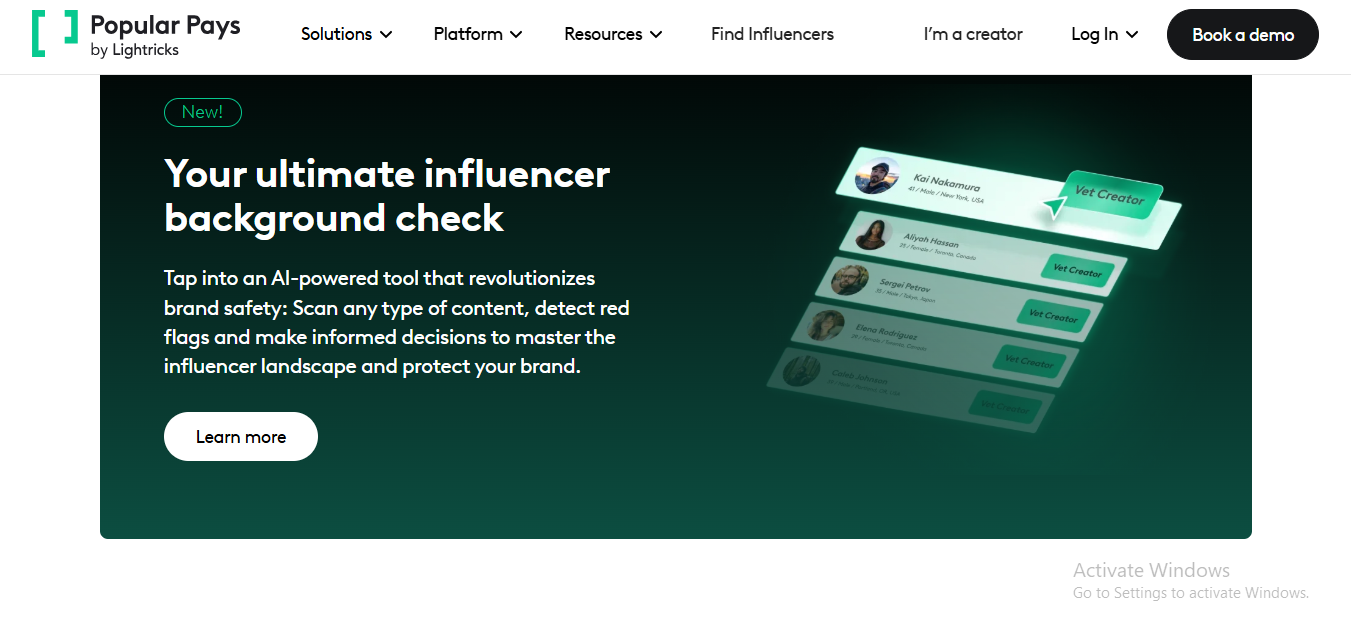
Ahh, Popular Pays. Think of it like the cool older cousin who actually knows how to use TikTok and makes money doing it.
What I Loved:
-
Creator Marketplace is stacked with all types of talent—from micro-influencers who are killin’ it with niche content, to polished creators with high-end production.
-
Content-First Platform. It’s less about influencer “fame” and more about the actual quality of UGC. Yes, please.
-
Flexible Campaign Types—paid, gifted, long-term, one-off, you name it.
What I Didn’t Like:
-
UI isn’t exactly intuitive. Like, it works, but don’t expect Canva-level vibes. There’s a bit of a learning curve.
-
Pricing model can feel vague at first. Brands might want more upfront info before signing on.
Pricing:
-
$$$ – Not the cheapest, but if you want diverse, high-quality content fast, it’s worth the swipe right.
8. Collabstr
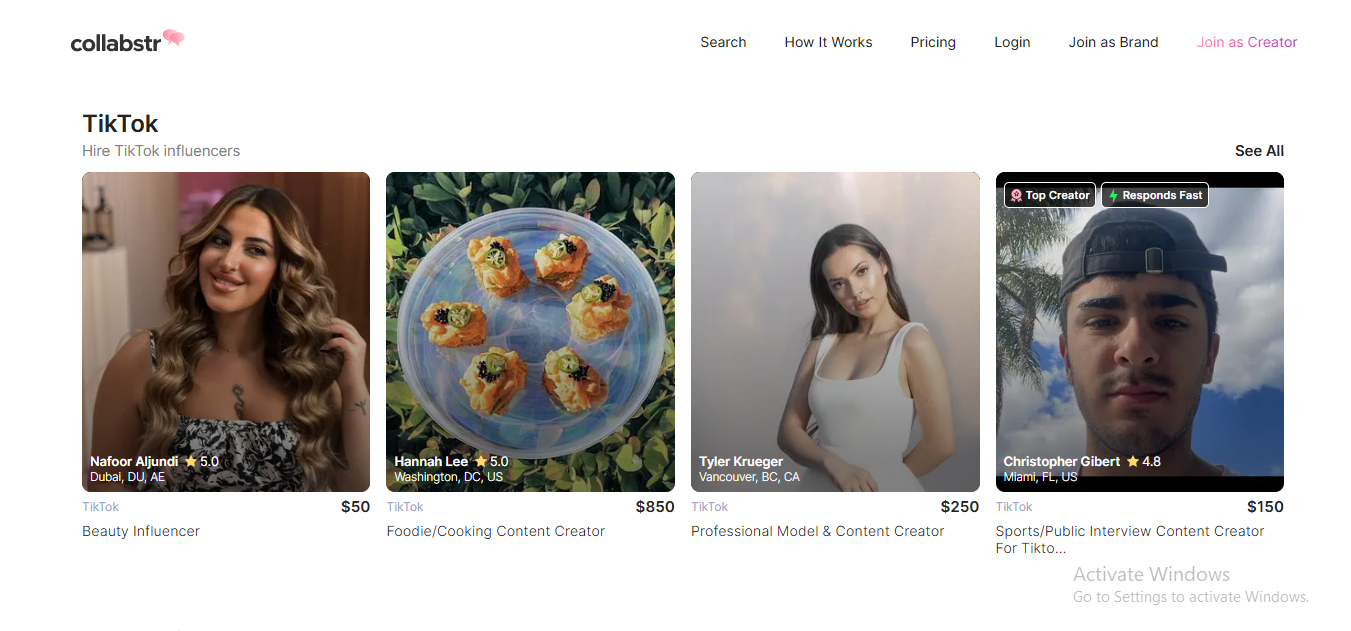
Now here’s a platform for the DIY influencer manager in all of us—Collabstr is kinda like the Craigslist of influencer collabs… but in a good way.
What I Loved:
-
You get full control. Post a listing, get responses from creators, or browse their marketplace and just… book them. No fluff, no pitch decks.
-
Set prices upfront. This isn’t “DM to collab” chaos—everyone lists their rate. No ghosting, no weird back-and-forth.
-
Perfect for small businesses or one-person marketing teams.
What I Didn’t Like:
-
Fewer features. No robust analytics or campaign tracking. It’s more “Trello board and vibes” than enterprise software.
-
Limited vetting. You’re relying on star ratings and vibes. Sometimes it’s a gamble.
Pricing:
-
$–$$ – Pay per collab. Budget-friendly, especially if you don’t need deep integrations.
9. Kolsquare
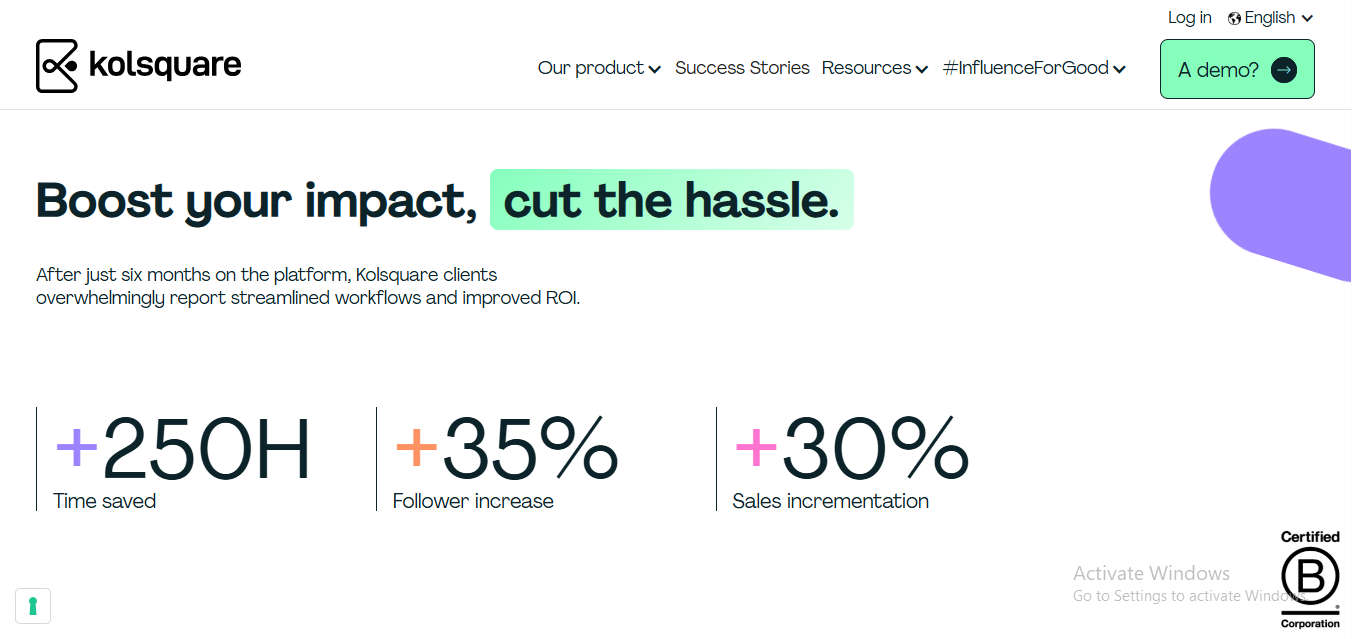
Let’s get a lil’ fancy. Kolsquare is the French wine of influencer platforms—refined, global, and data-heavy.
What I Loved:
-
Huge international database. This is the move if you’re working across Europe or want creators in different languages and markets.
-
Detailed influencer insights—audience stats, fake follower checks, historical campaign performance. Nerds, unite.
-
Enterprise-level campaign management tools. Like, spreadsheets who?
What I Didn’t Like:
-
UX is a tad complex. You’ll get amazing insights—but you might need a quick onboarding sesh to find your way around.
-
Pricey for smaller brands. But if you’re rolling with agencies or managing multiple regions, this could be a gem.
Pricing:
-
$$$$ – Best for medium-to-large brands that want real data with their influencer latte.
10. Captiv8

Oof. Captiv8 goes hard. It’s like the Avengers HQ for influencer campaigns—fully loaded, full of tech, and pretty dang pretty to look at.
What I Loved:
-
Crazy good analytics. You can measure literally everything. Engagement, sentiment, clicks, conversions, and more.
-
AI-assisted creator matching is spooky good. Like “how did you know I needed a plant-based wellness influencer from Denmark?” kinda good.
-
CRM-style dashboard that lets you manage your creator relationships like a pro.
What I Didn’t Like:
-
Not for the faint of budget. This is a serious platform, and the price reflects that.
-
Takes time to onboard. You’re gonna want to block off a couple hours, maybe grab a snack, and dig in.
Pricing:
-
$$$$ – Meant for agencies or brands managing multiple creators or campaigns at once.
11. Aspire (aka Aspire.io)
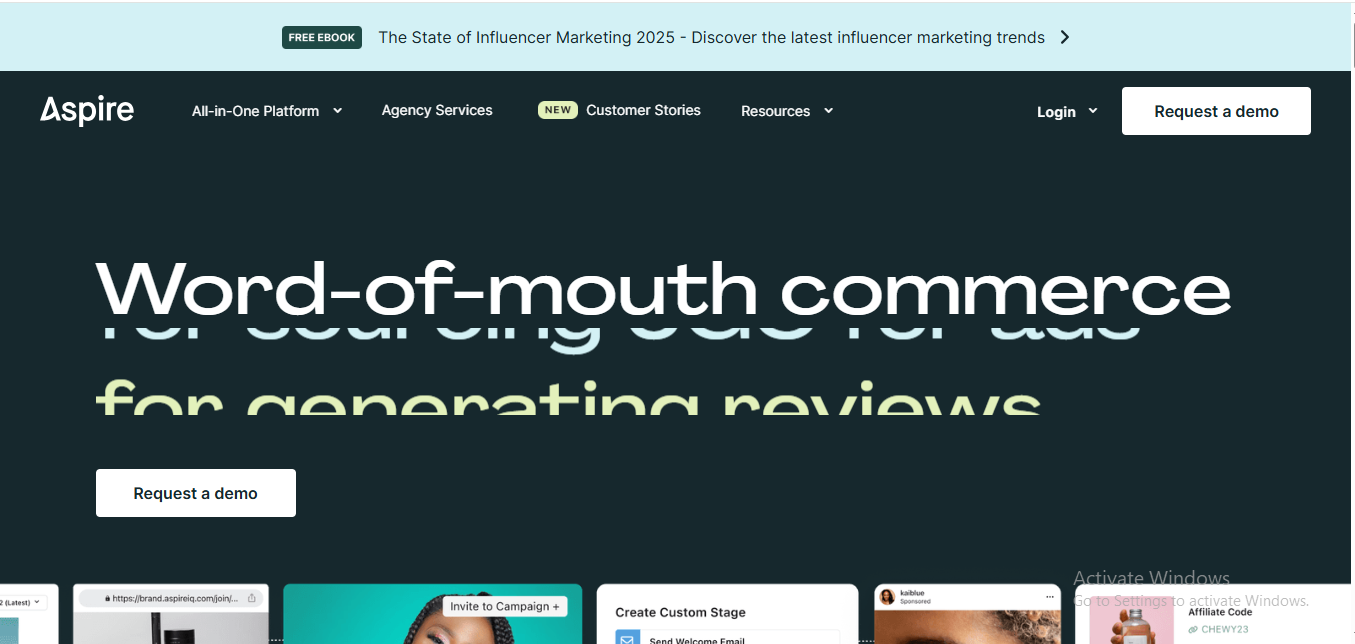
Okay, this one? I stan. Aspire (formerly AspireIQ) is that one platform you didn’t expect to love as much as you do—and now you’re telling your friends like it’s your latest skincare find.
What I Loved:
-
All-in-one UGC & influencer magic. You can manage paid campaigns, gifting collabs, affiliate deals, and even turn customers into creators.
-
Ecommerce integration is chef’s kiss. If you’re on Shopify or WooCommerce, it’s basically built for you.
-
Super user-friendly. Easy for solo marketers and teams.
What I Didn’t Love:
-
Limited influencer discovery unless you upgrade. A few tools feel slightly gated.
-
Support could be faster. Sometimes had to wait longer than expected for a human to get back.
Pricing:
-
$$$ – Solid mid-tier pricing, and probably the best value on this whole list for what you get.
12. The Cirqle (For Comparison)
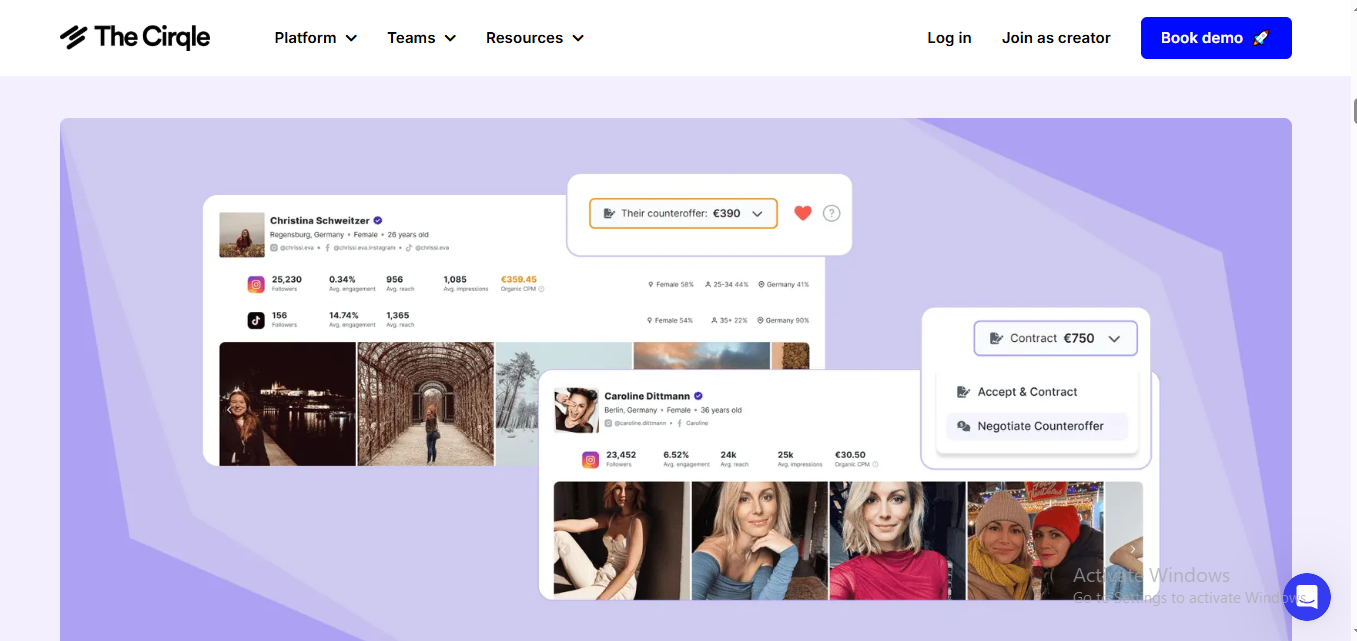
Ah yes, the OG. Gotta compare the rest to The Cirqle, right?
What Worked:
-
Creator-brand matchmaking felt personalized. It wasn’t just a numbers game.
-
Campaign visuals and content-first approach were top-notch for storytelling.
What Fell Short:
-
Limited scalability. Once we wanted to expand into multiple markets or creators, the features felt kinda thin.
-
Basic reporting tools. Not ideal for performance tracking or multi-team workflows.
Pricing:
-
$$$ – Fairly priced for what it offered, but not flexible enough for heavy campaign management.
13. TRIBE
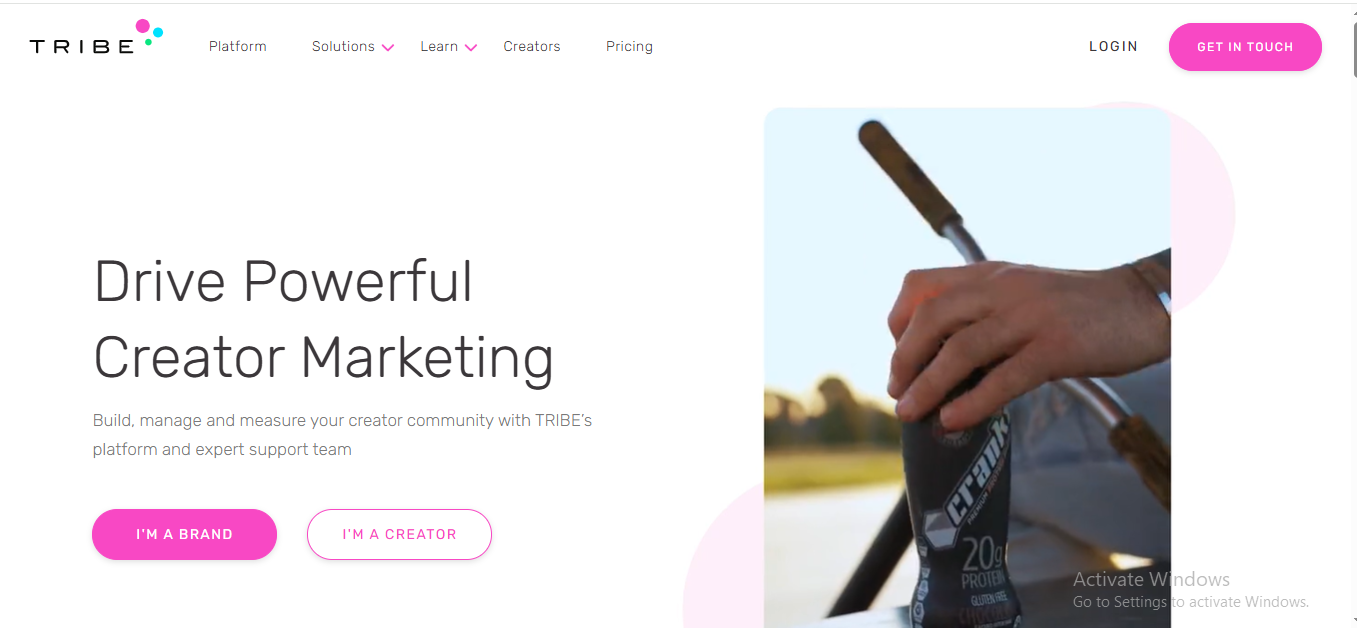
Okay, TRIBE is that influencer platform that gets straight to the point—kind of like that one friend who’s always got receipts. It’s built for brands to get fresh UGC fast.
What I Liked:
-
Self-serve vibes. Creators pitch to you with their ideas and content BEFORE you pay. Genius.
-
Great for UGC. If you want raw, scroll-stopping social posts that don’t scream “ad,” this is it.
-
Instagram + TikTok focused. They know where the hype lives.
What I Didn’t Like:
-
Limited creator control. You gotta wait for creators to pitch—you can’t really go headhunting.
-
Not ideal for long-term collabs. It’s giving one-night stand, not relationship.
Pricing:
-
$$ – Campaign-based pricing, accessible for brands with smaller budgets.
Vibe Check:
For brands who want fresh content fast, without the messy back-and-forth.
14. Braze
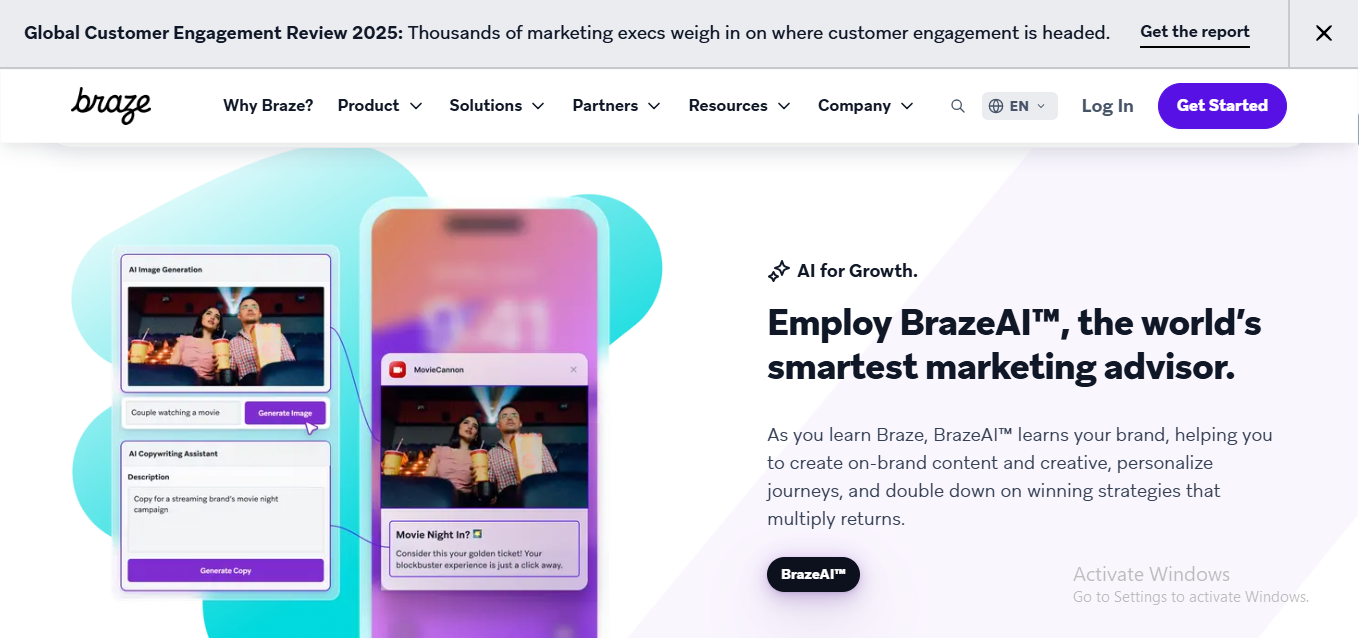
So, Braze isn’t technically an influencer platform, but hear me out—it’s a superpower for customer engagement. If you’re mixing influencer efforts with push, SMS, or email… Braze comes through like Marvel’s Nick Fury.
What I Liked:
-
Advanced segmentation. Wanna send exclusive influencer drops to your VIP customers? Done.
-
Cross-channel marketing that actually feels seamless.
-
Personalization is chef’s kiss. You can serve content tailored down to the user’s fav color, if you want.
What I Didn’t Like:
-
No influencer matchmaking. This isn’t where you find talent, it’s where you amplify them.
-
Pricey and needs a brainy team to set it up. Not ideal if you’re running solo.
Pricing:
-
$$$$ – Definitely enterprise-level. Bring your CMO and data nerds.
Vibe Check:
For tech-savvy teams integrating influencer campaigns into full-on customer journeys.
15. IZEA
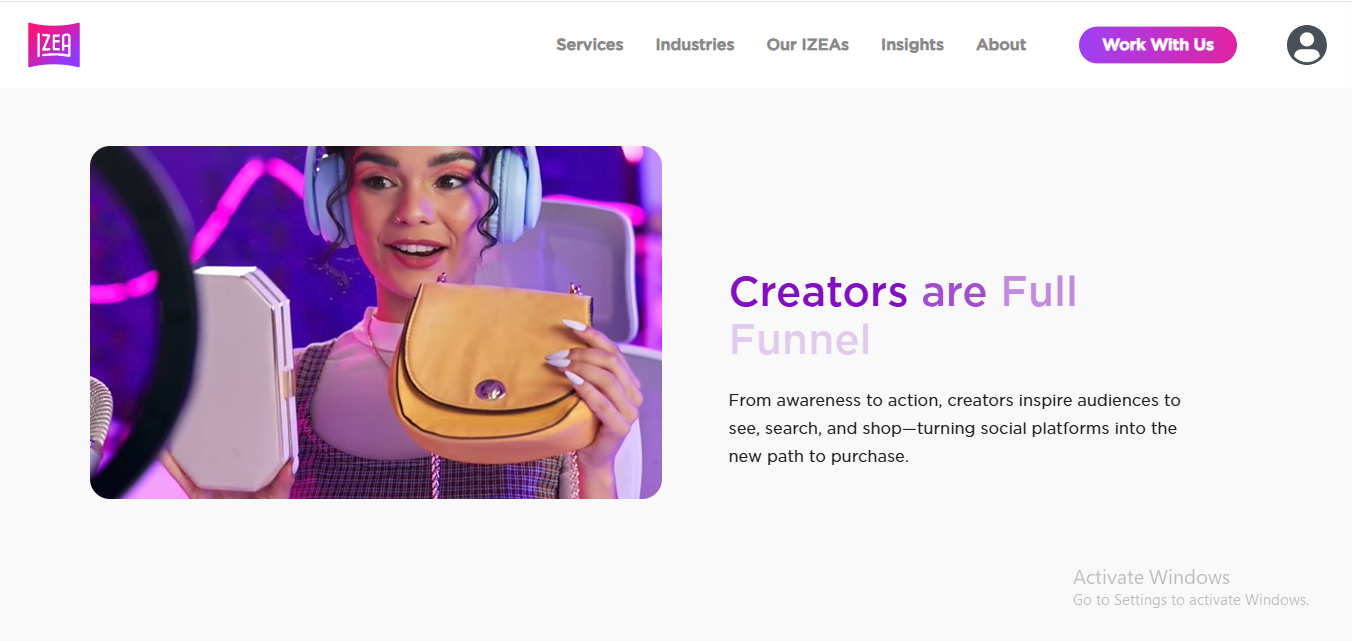
Listen, IZEA has been in the influencer game since before TikTok was even a thing. It’s like the seasoned vet who still pulls in wins.
What I Liked:
-
End-to-end campaign management. Briefing, hiring, payments, analytics—check, check, check.
-
Marketplace is stacked with influencers across niches and follower sizes.
-
Content-only collabs? Also on deck. You don’t have to do promo—just get content.
What I Didn’t Like:
-
User experience can be clunky. It’s functional, but kinda feels like using Facebook in 2010.
-
You need to dig to find the right creators sometimes.
Pricing:
-
$$$ – You can start small, but features really shine when you go pro.
Vibe Check:
For brands that want all-in-one management but aren’t tryna get fancy with UI.
16. Insense

Yo, Insense is lowkey a sleeper hit. If you’re a DTC brand needing creator-made ads and UGC that doesn’t suck? Run, don’t walk.
What I Liked:
-
Creator marketplace meets ad studio. You can hire creators to shoot verticals for TikTok, Reels, etc.—they even understand hooks!
-
Ad Manager integrations (Meta, TikTok)—upload content directly to your ad accounts.
-
Super easy to brief creators with templates and content examples.
What I Didn’t Like:
-
Limited analytics. It’s more for content creation, less for deep influencer metrics.
-
Not a community platform. You won’t be building ambassador programs here.
Pricing:
-
$$ – Per content piece/campaign. Budget friendly and scalable.
Vibe Check:
For brands who want UGC that slaps and converts, without overthinking it.
17. Influence.co

So this one? Influence.co is like LinkedIn for influencers—but in a chill, California beach kind of way.
What I Liked:
-
Community feel. It’s not just a marketplace—it’s where creators show off their work and connect with each other.
-
Free to browse and message creators. Yep, even without a fat budget.
-
Strong portfolio game. Creators’ profiles are 🔥 and detailed.
What I Didn’t Like:
-
Campaign management tools feel light. You’re gonna need spreadsheets and manual tracking for bigger ops.
-
Smaller pool of influencers compared to the big dogs.
Pricing:
-
$–$$ – Free to start, with paid upgrades.
Vibe Check:
For brands that want real connections and creative talent without the corporate vibes.
18. Influencer (aka Influencer.com)
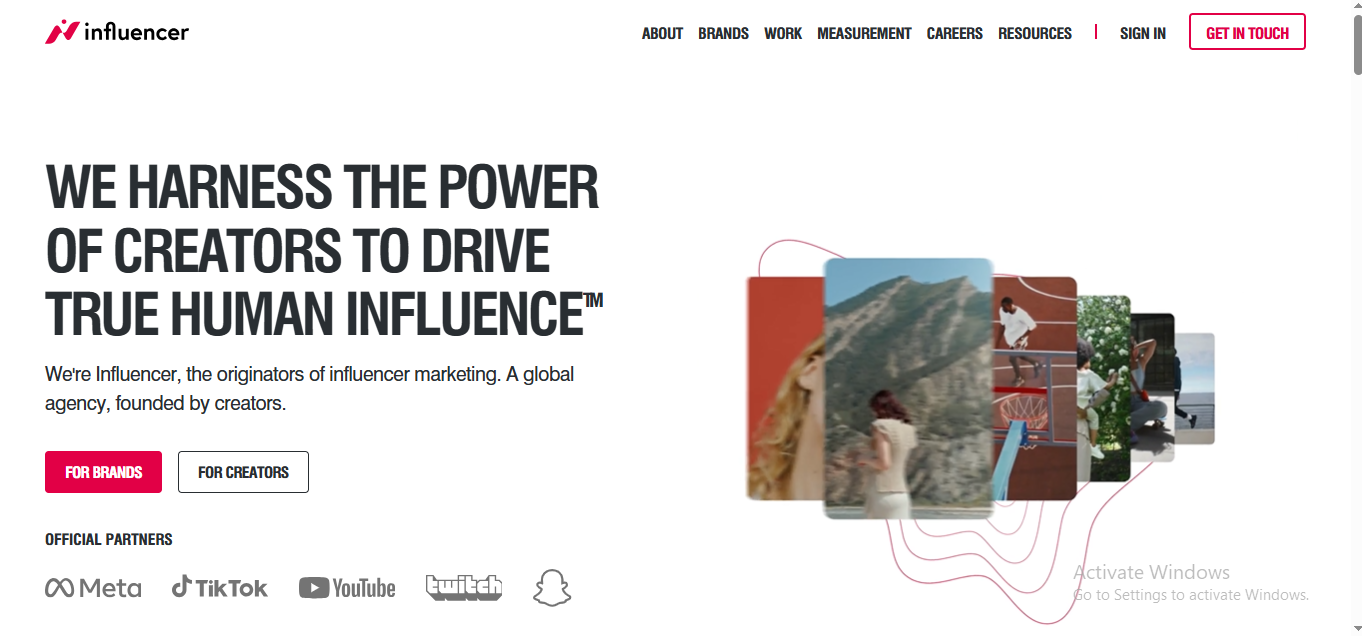
Alright, this one has a name so on-the-nose it almost hurts. But Influencer.com means biz, y’all.
What I Liked:
-
Enterprise-grade campaign support. Think full-service + tech, especially if you’re running big multi-market influencer activations.
-
Audience-first approach. They focus on WHO sees the content more than who creates it. Smart.
-
Solid analytics suite for optimizing content and spend.
What I Didn’t Like:
-
Requires bigger budgets. This ain’t for your Etsy side hustle.
-
Not very DIY-friendly. You’re getting an agency-lite experience, not a self-serve tool.
Pricing:
-
$$$$ – Custom pricing, geared for large brands.
Vibe Check:
For enterprise brands or agencies who want strategy, scale, and serious impact.
19. Later
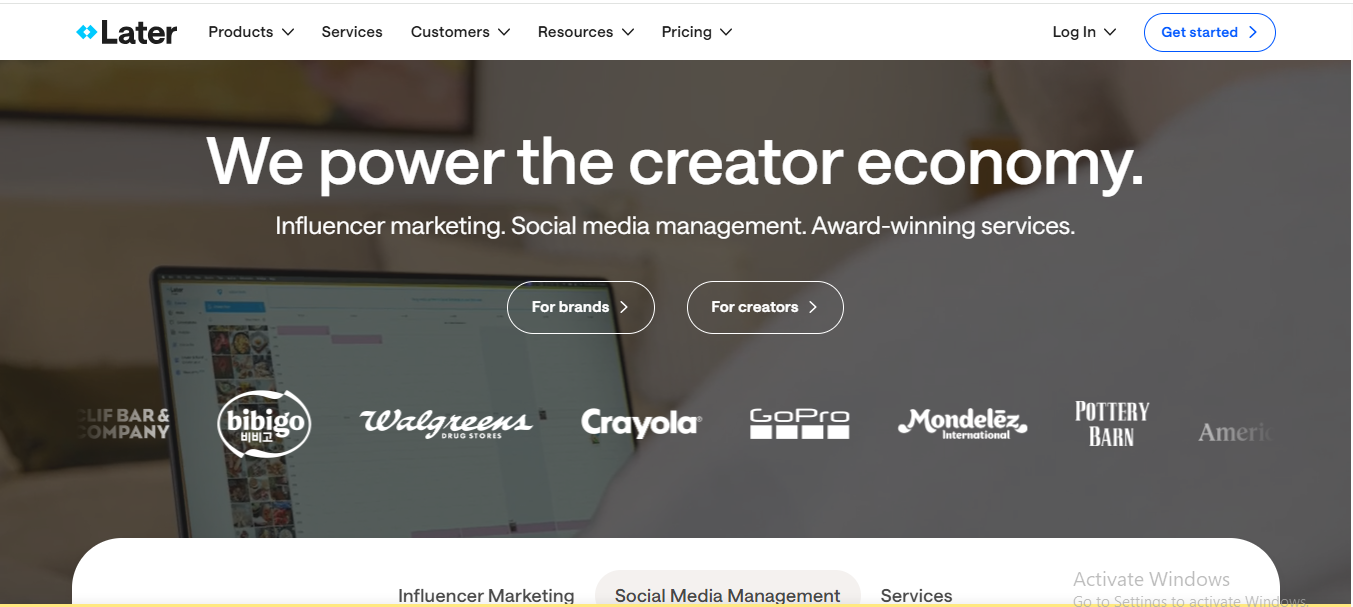
Okay, Later is like that Instagram girl who figured out how to schedule content and monetize the whole thing. While it’s mainly known as a social media scheduling tool, Later’s influencer platform surprised me.
What I Liked:
-
Visual planner is so dang pretty and easy. You literally drag and drop.
-
Their Linkin.bio feature is a game-changer if you’re also running your own brand page.
-
Their Collabs tool lets brands find influencers and run campaigns all in one place.
What I Didn’t Like:
-
If you’re looking for deep influencer metrics, it’s kinda light.
-
Not ideal for large-scale campaigns—think boutique brand energy.
Pricing:
-
$–$$ – Super affordable. Starts free, and then tiers up based on features.
Vibe Check:
For social-first brands who wanna keep it aesthetic and efficient.
20. Shout Agency
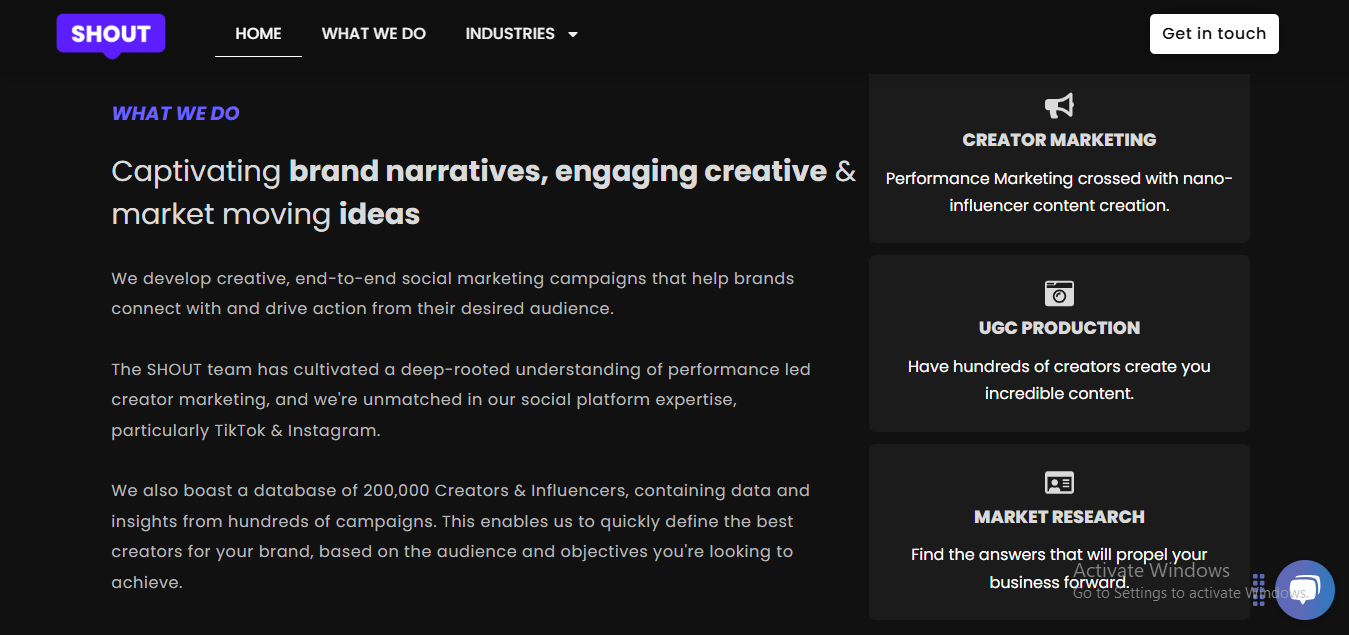
Alright, Shout Agency gives big “we get influencers” energy. It’s not your basic platform—it’s a full-blown creative agency that brings in strategy, not just software.
What I Liked:
-
Creative-led campaigns—they’ll help with the concept and the execution.
-
They have strong relationships with creators. Like, real connections, not just scraped profiles.
-
Great for brands who want storytelling, not just posts.
What I Didn’t Like:
-
Not self-serve—this isn’t a plug-and-play platform.
-
You need a budget. Not mega-enterprise money, but not pennies either.
Pricing:
-
$$$–$$$$ – Custom packages. Think boutique agency pricing.
Vibe Check:
For brands wanting full-service creative storytelling from real influencers.
21. Klear
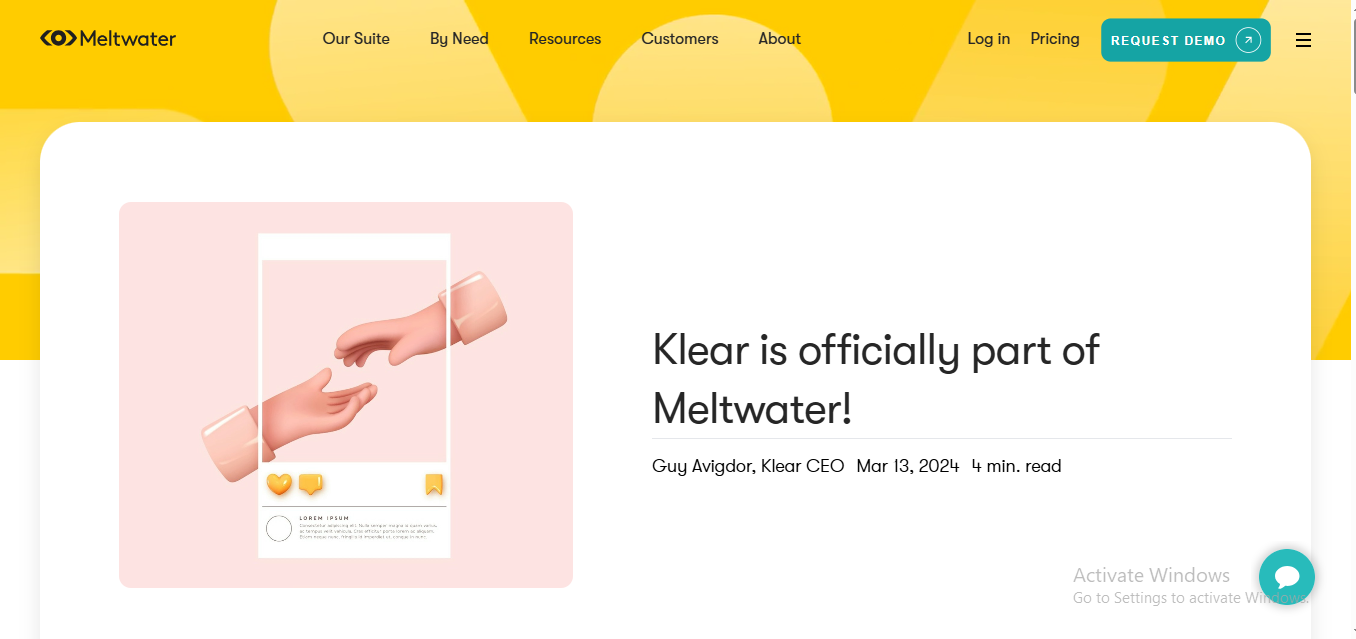
Yo, Klear is the Hermione Granger of influencer platforms—wicked smart, kinda nerdy, but insanely powerful. This one’s built for brands who want data behind their collabs.
What I Liked:
-
Massive influencer database. Filters go deep—location, niche, engagement rate, fake follower score? Done.
-
Campaign tracking is next-level. From first contact to ROI reports.
-
Integrates with your fave tools like HubSpot and Salesforce.
What I Didn’t Like:
-
UI could be prettier. I’m just saying.
-
Can feel a little “corporate,” not super vibey.
Pricing:
-
$$$$ – Not for newbies. Definitely for brands that are scaling.
Vibe Check:
For data-obsessed marketers who want receipts before spending a dime.
22. Brandbassador

Okay, Brandbassador is giving “influencer army” realness. This platform is all about brand ambassadors, not just one-off collabs. It’s gamified, and honestly? Kinda addictive.
What I Liked:
-
Gamification system. You set “missions” for influencers to earn cash, discounts, or perks.
-
Great for building a long-term community, not just running a one-and-done campaign.
-
The dashboard is—clean, colorful, and easy to use.
What I Didn’t Like:
-
Works best for consumer brands with a strong lifestyle identity.
-
Smaller pool of mega influencers, more focused on micro/ambassadors.
Pricing:
-
$$$ – Worth it if you’re planning to build a brand fam. Not ideal for hit-and-run campaigns.
Vibe Check:
For brands who wanna build a loyal tribe and keep ‘em engaged for the long haul.
23. Shout UGC
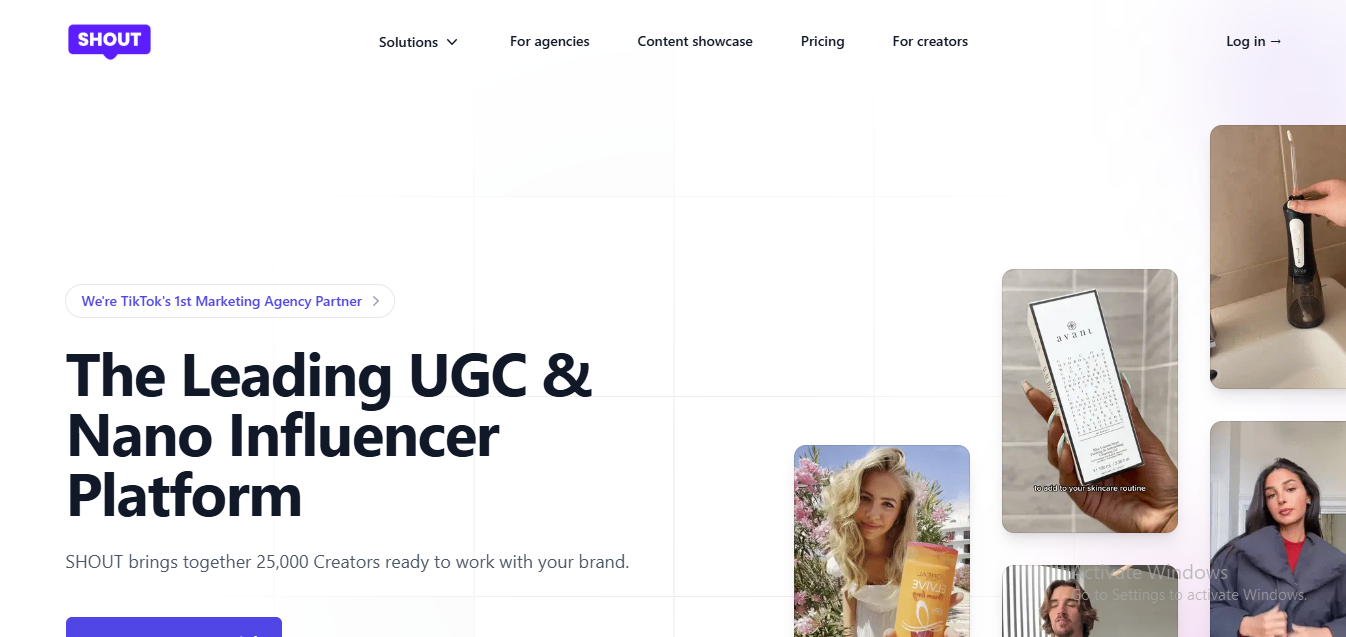
Don’t confuse this with Shout Agency—Shout UGC is laser-focused on user-generated content. It’s like ordering takeout content from creators who know the platform game inside and out.
What I Liked:
-
Fast turnaround. You get scroll-stopping videos for TikTok, Reels, and ads in days.
-
Pay-per-video model = clear and predictable budgeting.
-
No posting required. You’re buying the content, not the shoutout.
What I Didn’t Like:
-
Not ideal for campaign strategy. This is content only, not influencer promotion.
-
You might have to guide creators if your product is niche.
Pricing:
-
$–$$ – Transparent, à la carte pricing.
Vibe Check:
For brands that want 🔥 video content without running influencer campaigns.
24. CreatorIQ
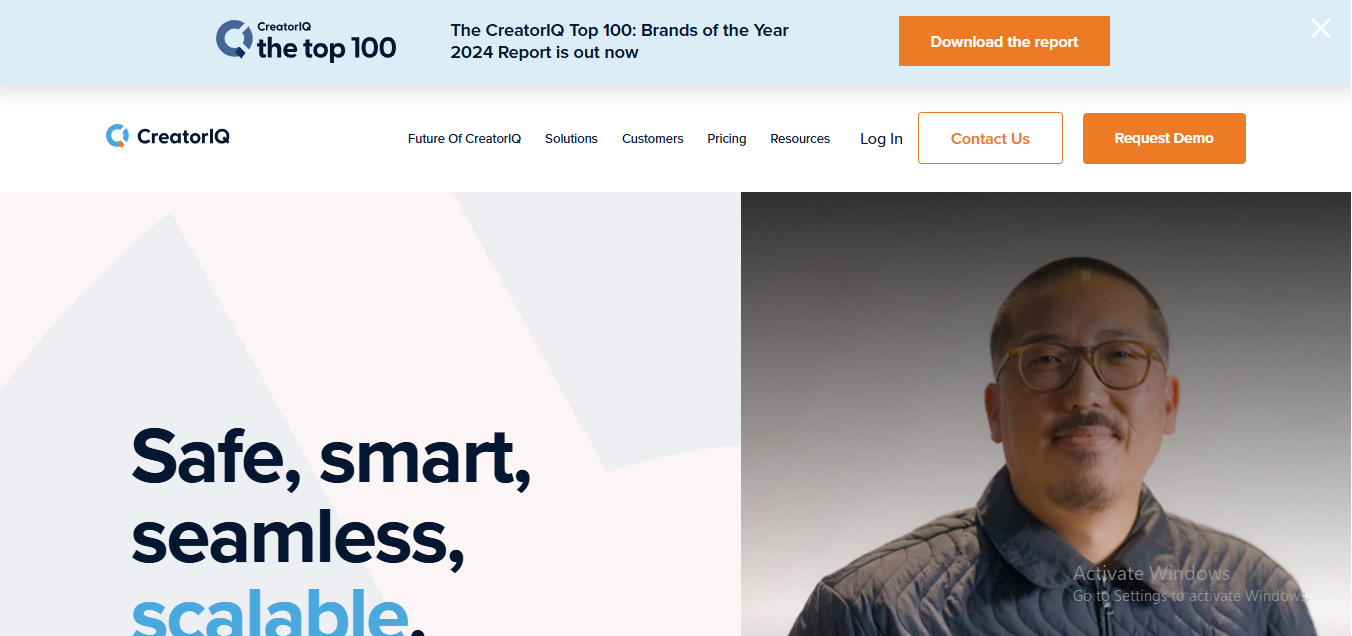
CreatorIQ is basically the Harvard of influencer marketing platforms. Think enterprise, think massive campaigns, think serious results.
What I Liked:
-
Insane data depth—like, creepily accurate.
-
Global compliance tools—so your campaign doesn’t get flagged in five countries.
-
White-label options for agencies or platforms.
What I Didn’t Like:
-
Onboarding is intense. You need time to learn the platform.
-
Expensive af if you’re not a large brand.
Pricing:
-
$$$$ – Big budget territory.
Vibe Check:
For Fortune 500s, power agencies, or brands scaling like crazy.
25. InfluencerMarketing.ai
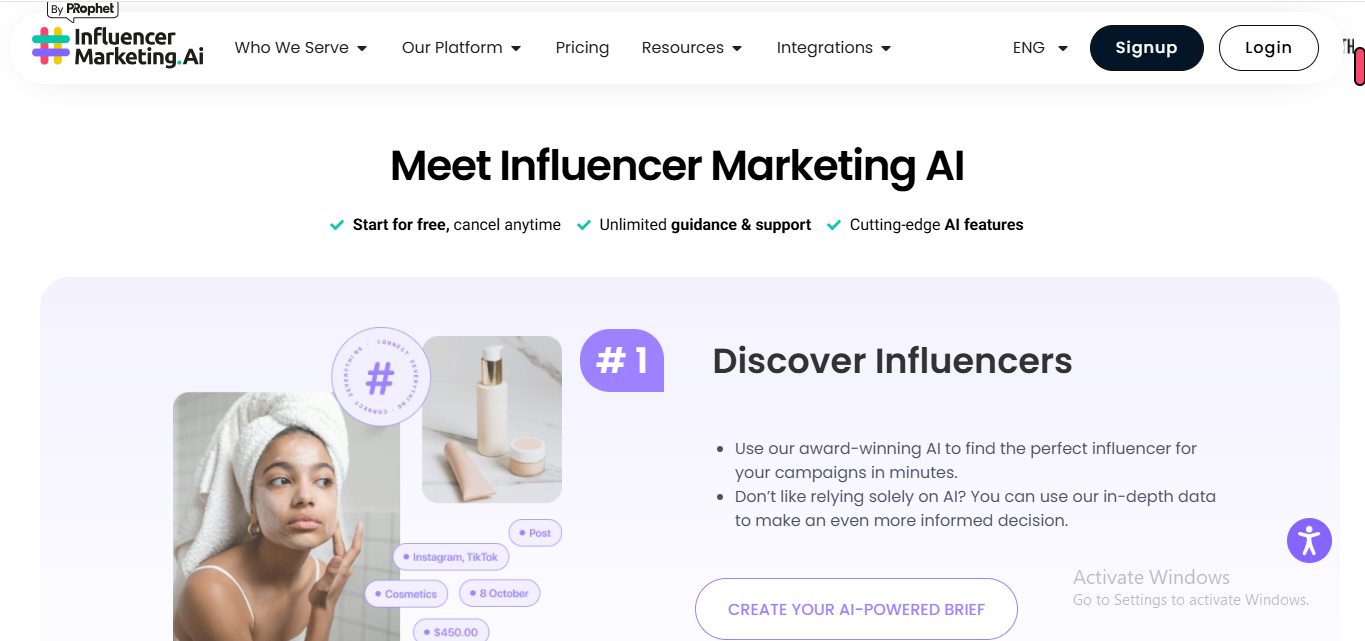
This one surprised me. I wasn’t expecting much, but InfluencerMarketing.ai came through with a nice lil combo of automation + data smarts. Think of it like the AI cousin of Cirqle—smarter, faster, and doesn’t ghost you.
What I Liked:
-
AI search tool is scary good. You type what you’re looking for, and boom—perfect influencers pop up.
-
It has a built-in CRM to manage creators, which is so handy if you’re juggling more than 5 at once.
-
You can generate contracts, automate outreach, and even track performance in real-time.
What I Didn’t Like:
-
The UI isn’t super sleek. More Excel than Instagram if you get me.
-
Needs a little hand-holding at first—takes a minute to get used to all the automation.
Pricing:
-
$$–$$$ – Mid-tier pricing. You get a lot of tools, so honestly? Worth it.
Vibe Check:
For teams who love tech and want to run influencer campaigns on autopilot.
26. Traackr

Traackr is like the finance bro of influencer platforms—hella data, super polished, and always in a blazer (figuratively). It’s built for the big players who wanna know exactly what they’re getting out of every single post.
What I Liked:
-
Insane performance tracking. Like, “I know how much ROI I got from that one Instagram Story” level.
-
Global search across dozens of countries and verticals. Very helpful for international brands.
-
Helps you track spend vs. results down to the last dollar. Yes, even the boosted IG posts.
What I Didn’t Like:
-
It’s very numbers-focused. Not a lot of creative vibes.
-
Not super intuitive unless you’re used to working in dashboards all day.
Pricing:
-
$$$$ – Big brand energy. This one is an investment.
Vibe Check:
For enterprise teams, performance marketers, or anyone who thinks ROI is sexy.
27. Upfluence
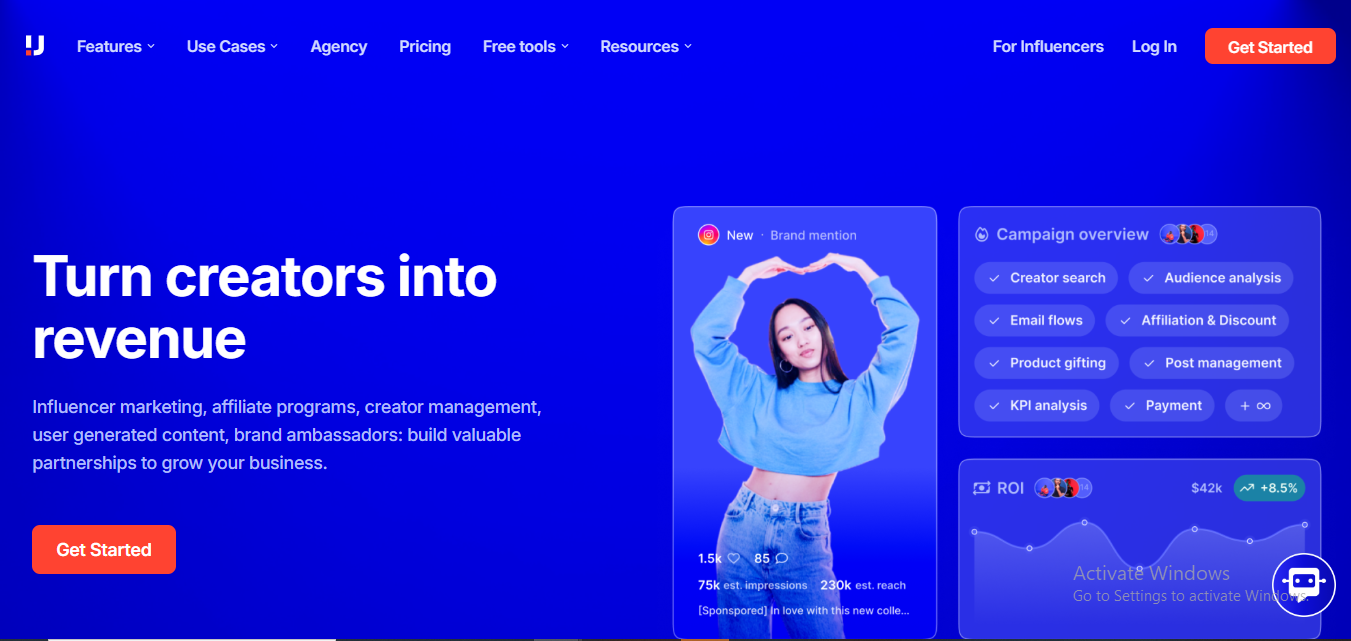
Ahhh, Upfluence. It’s been around for a while, and it shows—in a good way. They’ve been iterating like crazy, and now it’s one of the most balanced platforms out there.
What I Liked:
-
Massive influencer database, updated regularly. You can filter down to location, niche, engagement, and more.
-
Built-in affiliate tracking, which is chef’s kiss if you want to go beyond just “awareness” campaigns.
-
Smooth Shopify and WooCommerce integrations.
What I Didn’t Like:
-
A few tools feel a little bulky. Like, why are there three clicks to edit a campaign name?
-
Customer service can be a lil slow when things go sideways.
Pricing:
-
$$$ – A bit on the higher side, but not nosebleed pricing. Worth it if you use all the features.
Vibe Check:
For growing brands who want campaign tools + eCommerce integrations in one clean package.
28. Meltwater
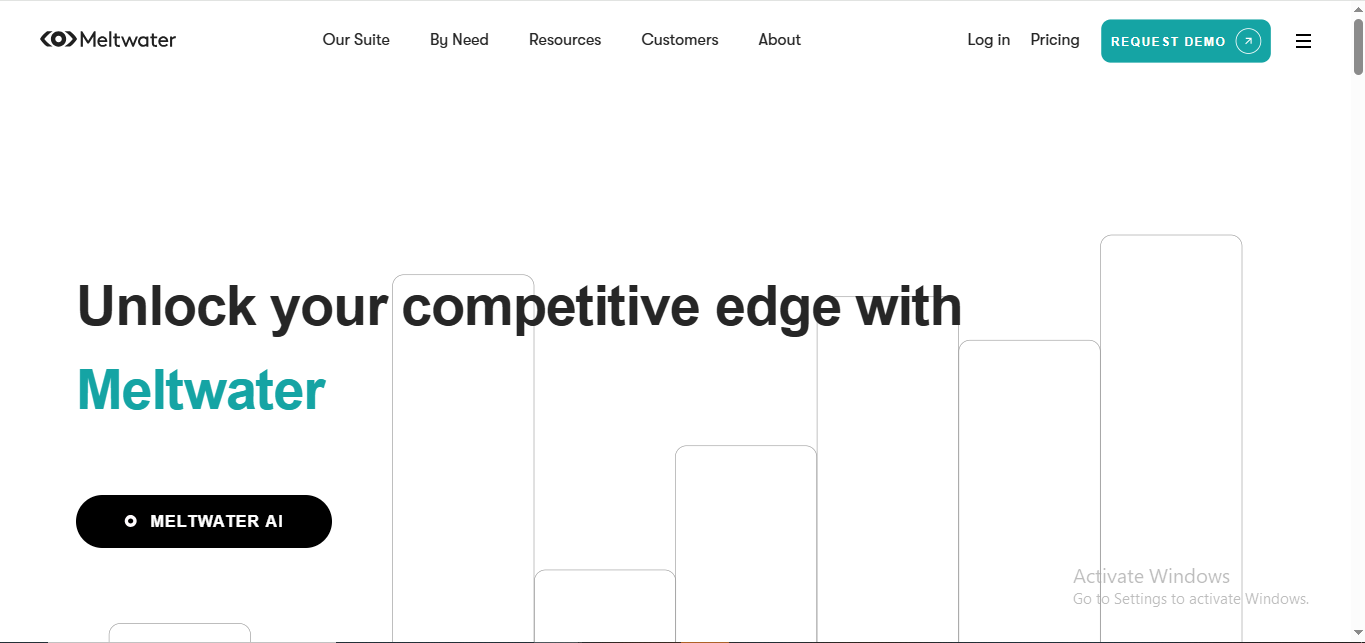
Okay, Meltwater is like the OG of media monitoring that got a glow-up and stepped into influencer marketing. This platform is for the brands who want a 360-view—not just influencers but the full media impact.
What I Liked:
-
Media + influencer insights in one place. You can track press hits, influencer mentions, AND ROI.
-
Solid reporting tools—great for impressing your boss or investor deck.
-
Global reach. We’re talking hundreds of thousands of profiles.
What I Didn’t Like:
-
It’s not super influencer-friendly in terms of vibe. This one’s made for brands, not creators.
-
Interface feels a bit dated at times—like 2018 corporate dashboard energy.
Pricing:
-
$$$$ – Enterprise-level, and they charge like it.
Vibe Check:
For brands who want the full PR + influencer ecosystem mapped out like a NASA launch.
29. The Social Cat

Okay, this one’s a cutie. The Social Cat is all about micro-influencers and UGC, and it’s giving cozy startup vibes. Super simple, super fast, and perfect for DTC brands or small businesses.
What I Liked:
-
Free to start—yup, you can start matching with creators without dropping a dime.
-
Micro-influencer focus means you get real, relatable content, not just filtered perfection.
-
Quick turnaround. You get matched, send product, get content. Boom.
What I Didn’t Like:
-
Small creator pool compared to the big dogs.
-
Not great for high-stakes campaigns or deep analytics.
Pricing:
-
Free–$ – Very startup-friendly. Paid plans just unlock more matches and features.
Vibe Check:
For small brands that want authentic UGC and don’t need 10,000 data points to make a decision.
- Best LeadsGorilla Alternatives for 2025 - April 22, 2025
- Best Leadzai Alternatives for 2025 - April 22, 2025
- Best LeadSwift Alternatives for 2025 - April 21, 2025



